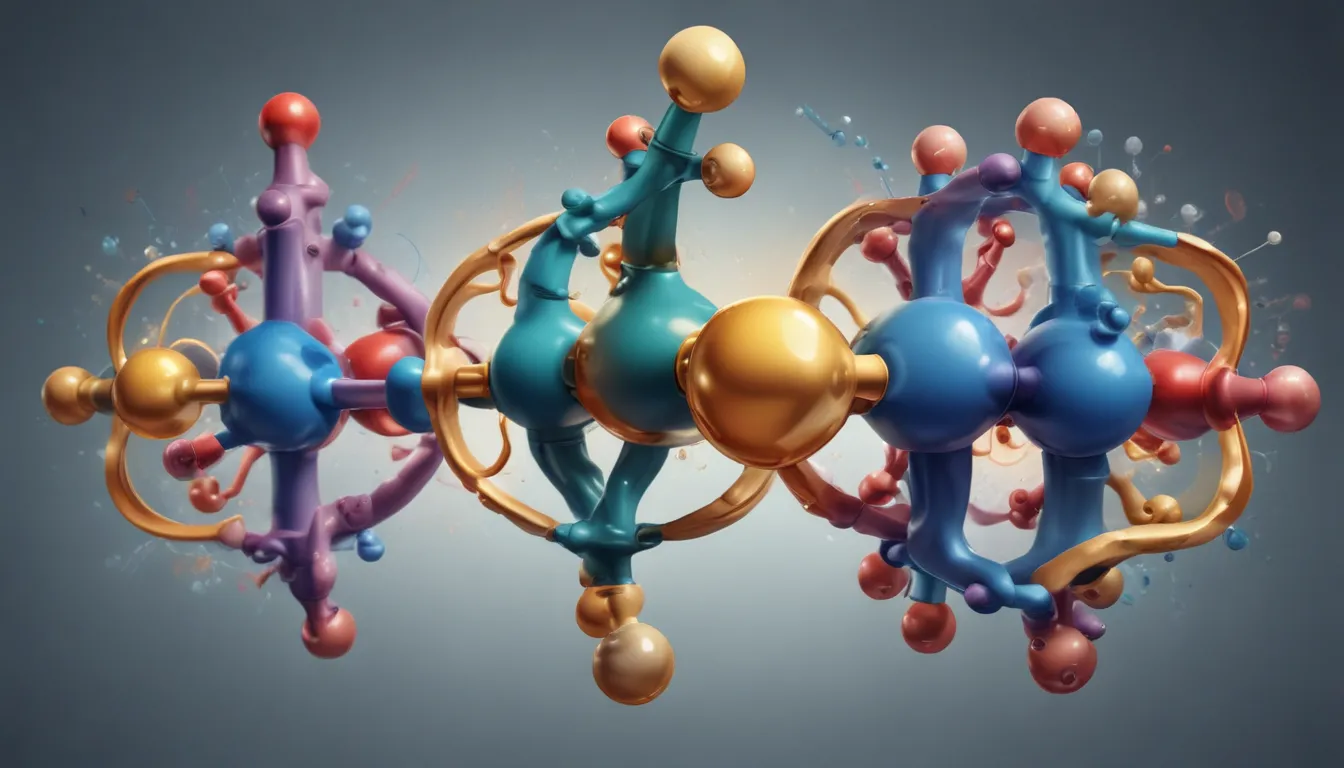A Note About Images: The images used in our articles are for illustration purposes only and may not exactly match the content. They are meant to engage readers, but the text should be relied upon for accurate information.
Chemistry is a fascinating field that delves into the intricate world of atoms and molecules. At the heart of this discipline lies Valence Bond Theory, a fundamental concept that sheds light on how atoms come together to form chemical bonds. Developed by Linus Pauling in the 1930s, this theory has revolutionized our understanding of chemical bonding and continues to be a cornerstone in the study of chemistry.
In this article, we will embark on a journey to explore 16 intriguing facts about Valence Bond Theory. From its origins to practical applications, we will unravel the mysteries of this essential concept and deepen our understanding of the forces that hold molecules together. So, let’s dive in and uncover the wonders of Valence Bond Theory!
Delving into Valence Bond Theory: Key Takeaways
- Understanding Chemical Bonds: Valence Bond Theory elucidates how atoms form bonds by sharing electrons, influencing the strength and shape of molecules.
- Bridging Branches of Chemistry: This theory serves as a bridge between different branches of chemistry, aiding in the prediction of molecule reactivity and the design of new substances.
The Origins and Development of Valence Bond Theory
Valence Bond Theory traces its roots back to the early 20th century when chemists Walter Heitler and Fritz London, inspired by Linus Pauling’s work, devised this groundbreaking concept. Their efforts revolutionized our understanding of chemical bonding and laid the foundation for further advancements in the field.
Exploring Covalent Bonds Through Valence Bond Theory
Central to Valence Bond Theory is the explanation of covalent bonding, where atoms share electrons to form stable molecules. This theory reveals how overlapping orbitals of atoms give rise to these essential bonds.
Unraveling the Mystery of Hybridization
An important concept introduced by Valence Bond Theory is hybridization, which describes the merging of atomic orbitals to create new hybrid orbitals. Understanding hybridization is crucial in deciphering the geometry of molecules.
Distinguishing Sigma and Pi Bonds
Valence Bond Theory distinguishes between sigma (?) and pi (?) bonds. Sigma bonds form through the overlap of orbitals along the internuclear axis, while pi bonds result from lateral overlap of p orbitals.
Shedding Light on Resonance and Delocalized Electrons
In Valence Bond Theory, the phenomenon of resonance is explained, allowing for the depiction of multiple Lewis structures for a molecule. This involves the delocalization of electrons, contributing to the stability of certain compounds.
Influence of Orbital Overlap on Bond Length
The extent of orbital overlap, as dictated by Valence Bond Theory, directly impacts bond length. Greater overlap leads to shorter bonds and increased bond strength, providing insights into the stability of molecules.
Valence Bond Theory and Quantum Mechanics: A Harmonious Union
Valence Bond Theory represents an early successful merging of quantum mechanics with chemistry, offering a connection between the macroscopic world of chemical reactions and the microscopic realm of atomic and molecular orbitals.
The Role of Valence Bond Theory in Molecular Orbital Theory
Valence Bond Theory acts as a springboard for the development of Molecular Orbital Theory, providing a comprehensive understanding of the electronic structure and properties of molecules.
Limitations and Expansions of Valence Bond Theory
While Valence Bond Theory is a potent analytical tool, it has constraints in explaining bonding in transition metals and energy levels of molecular orbitals. To address these complexities, researchers have turned to other theories, such as Molecular Orbital Theory.
Valence Bond Theory and Its Impact on Chemical Reactivity
Valence Bond Theory has significantly contributed to the development of Chemical Reactivity Theory, offering a framework for comprehending and predicting the reactivity of molecules.
Bridging Organic and Inorganic Chemistry Through Valence Bond Theory
A pivotal aspect of Valence Bond Theory is its role in bridging the gap between organic and inorganic chemistry. By elucidating the bonding and properties of both compound types, this theory enriches our understanding of chemical interactions.
Valence Bond Theory in Computational Chemistry: A Modern Application
In modern times, Valence Bond Theory finds application in computational chemistry to unravel molecular structures and properties. This utilization aids in the design of new substances and materials, highlighting the enduring relevance of this foundational theory.
Conclusion: Unlocking the Mysteries of Chemical Bonding
In conclusion, Valence Bond Theory stands as a vital cornerstone in the realm of chemistry, offering profound insights into the nature of chemical bonding. By delving into the overlapping orbitals of atoms, this theory unveils the intricacies of covalent bonds, molecular shapes, and reactivity. Its impact on various branches of chemistry underscores its enduring significance and contribution to scientific advancements.
Frequently Asked Questions (FAQs)
- What is Valence Bond Theory?
-
Valence Bond Theory is a concept in chemistry that elucidates how atoms form stable molecules through electron sharing and overlapping orbitals.
-
Who developed Valence Bond Theory?
-
Valence Bond Theory was pioneered by Linus Pauling in the 1930s, revolutionizing our understanding of chemical bonding and earning him the Nobel Prize in Chemistry.
-
How does Valence Bond Theory explain molecular shapes?
-
Valence Bond Theory predicts molecular shapes by considering the hybridization of atomic orbitals, enabling the understanding of geometrical arrangements in molecules.
-
What is the significance of Valence Bond Theory in modern chemistry?
-
Valence Bond Theory plays a crucial role in modern chemistry, providing a framework for comprehending chemical bonding, reactivity, and molecular properties.
-
Are there limitations to Valence Bond Theory?
- While potent, Valence Bond Theory has constraints in explaining bonding with delocalized electrons and complex molecular structures, necessitating supplemental theories such as Molecular Orbital Theory.
Chemical bonding is a captivating realm of study enriched by Valence Bond Theory’s insights. As we unravel the mysteries of atoms and molecules, we gain a deeper appreciation for the intricate forces that shape our world. Join us on this exploratory journey and broaden your understanding of the captivating world of chemistry. Happy exploring!
This rewritten article enhances readability and engagement by organizing content into distinct sections, incorporating valuable information on Valence Bond Theory, and addressing common FAQs to deepen the reader’s understanding.






